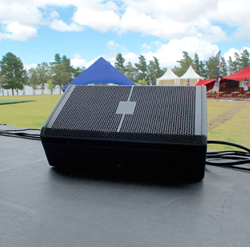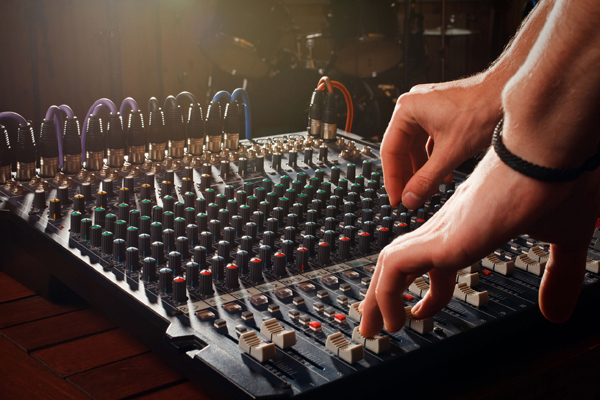
Configuration Concerns
Monitors are mixed on the house console at a good deal of the smaller festivals we serve. With analog consoles, particularly those with only a few pre-fader aux sends, this can limit the number of monitor mixes.
While we can get creative and use matrix outputs and post-fader aux sends to get a few more mix channels, a much better alternative is to go digital.
Most compact digital desks are outfitted with multiple assignable outputs that can be configured for pre-fader monitor sends, making it easy to route enough mixes to the stage. Further, digital desks that offer control via a tablet allow the engineer to walk on stage to adjust mixes, both before and after the performers arrive.
Something else that we’re investigating are the newer digital console/monitoring platforms that provide individual monitor control to each person on stage via their smart phones. Talk about a time saver!
Of course, for larger-scale events, we provide a dedicated monitor board located stage-side, manned by its own engineer. When there will be a lot of playback needed for singers and/or dancers, we position the playback devices at the monitor position so the engineer can trigger the cues.
If there’s a change in the program, (and there usually is) the performers (or their representative) can communicate the changes directly with the playback operator.
Working With IEM
While wedges are still most common on stages for smaller. locally-based festivals and event, we are seeing an increase in the use of IEM, which have become quite affordable.
One thing we’ve made standard operating procedure is making sure that mixes for performers on IEM are provided with some ambience from the audience (captured via a mic or two on stage pointed toward the crowd). This lessens the feeling of isolation that can particularly impact less-experienced performers as well as those new to IEM.
In most of these situations, we haven’t worked with the artists before, and there’s rarely any time for sound check. As a result, if it’s a stereo IEM system (most often the case), we center each singer’s vocal and instrument in their mix and pan everything else to the sides. With mono mixes, the emphasis is the same but of course it’s spatially much more limited.
We’re also a safety-first organization, so we try to do everything possible make sure that the performers aren’t turning up their systems too loud. Further, a squeal of feedback or loud thud from a dropped mic can also cause hearing damage, so compression and limiting is always deployed. Depending on the event, we’ll even insert “brick wall” limiting to control any unexpected spikes.
Quality antennas should be provided for use wireless IEM systems to help eliminate dropouts and other problems, particularly in this ongoing era of RF challenges. Directional “paddle-style” (a.k.a., log-periodic dipole array) antennas can provide up to 6 dB of gain, while Helical antennas can deliver up to 10 dB of gain.

